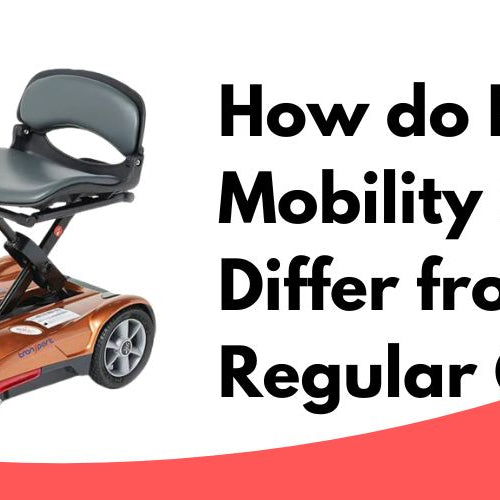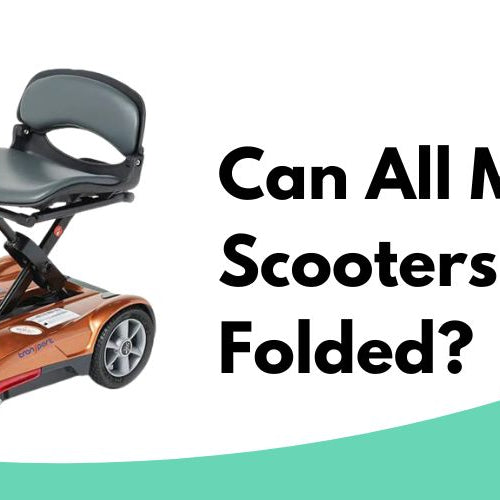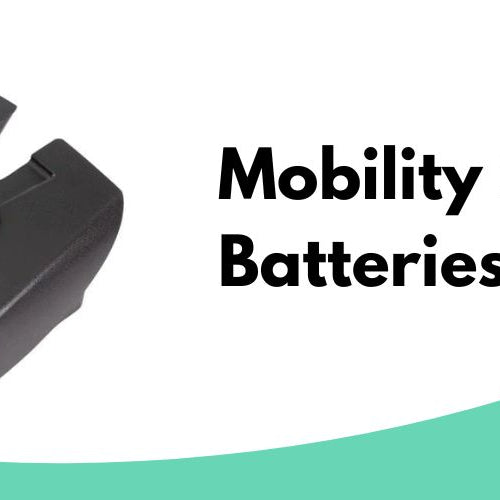Navigating the ins and outs of mobility scooter usage can often lead to questions about licensing regulations. The good news is, driving a mobility scooter does not generally require a driver's license. However, it is crucial to be aware of any restrictions or local laws that may affect where and how one can operate their scooter safely.
Mobility scooters are designed to provide assistance to those with limited mobility, allowing for increased independence and ease when traveling or performing daily tasks. Because these vehicles typically have low maximum speeds, often no more than 5 miles per hour, they are not subject to the same regulations as cars and trucks. It is worth noting that some areas may have specific municipal bylaws governing the use of mobility scooters on public roads, so it is essential to be familiar with those details to ensure safe and legal operation.
In general, there is no need to register a mobility scooter with the DMV, as long as it adheres to speed limitations. However, certain types of mobility scooters may require registration, particularly if they are designed for road use. To be well-informed and compliant, always check your local regulations before hitting the pavement with your scooter.
Mobility Scooter Basics
ECU and Motor
Mobility scooters are powered by an electric motor and are controlled by an electronic control unit (ECU). This means they are primarily battery-operated, providing a quiet and environmentally friendly mode of transportation. The motor is designed to provide users with sufficient power to navigate different terrains and inclines, allowing for ease of movement in various settings.
Maximum Speed
One significant aspect of mobility scooters is their maximum speed. These vehicles are intentionally designed to go slow, usually not exceeding 4 to 5 miles per hour (mph). This reduced speed ensures that users can safely drive in pedestrian areas, such as sidewalks, without posing a risk to other individuals. It also makes controlling and maneuvering the scooter much more manageable, even for first-time users.
Safety Features
When it comes to safety, mobility scooters come equipped with several features to ensure a secure and comfortable experience for users. Some of the key safety aspects include:
-
Mirrors: Scooters are often fitted with rearview mirrors, allowing users to easily monitor their surroundings and maintain awareness of any approaching traffic or pedestrians.
-
Seat: The seat on a mobility scooter is designed for optimal comfort and stability. Its ergonomic design, together with adjustable height and back support, allows users to maintain a proper posture while driving, reducing the risk of discomfort or injury.
-
Brake system: Mobility scooters feature a reliable braking system, functioning similarly to those found in cars. Upon releasing the throttle, the scooter will gradually come to a stop, ensuring a smooth and safe halt.
In conclusion, mobility scooters are user-friendly, slow-moving vehicles engineered with various safety features to provide users with a secure means of transportation that does not require a license to operate.
Mobility Scooter Regulations and Licensing
Driver's License Requirements
When it comes to operating a mobility scooter, in most cases, a driver's license is not required. This is because mobility scooters are designed to aid individuals with limited mobility and are usually battery-operated, making them significantly different from other vehicles like cars, motorcycles, and recreational vehicles. Therefore, driving a mobility scooter without a license is generally permitted.
Minimum Age
There is typically no minimum age requirement specified to operate a mobility scooter. It is primarily intended for seniors, disabled individuals, and those with limited mobility for whom the scooter provides significant benefits in daily living, commuting, and performing daily tasks. However, it is essential for anyone using a mobility scooter, regardless of age, to feel confident in operating it and make safety their top priority.
Vehicle Registration
Although a mobility scooter does not require a driver's license or specific minimum age to operate, certain regulations surrounding vehicle registration may still apply. In some locations, you might need to register your mobility scooter, particularly if it will be driven on roads or public spaces. These registration requirements may vary based on local laws, the type of scooter, and its maximum speed.
In conclusion, driving a mobility scooter without a license is generally allowed, but it is essential to be aware of specific local regulations regarding vehicle registration and complying with any other relevant laws. Safety and responsibility should always be prioritized when operating a mobility scooter, regardless of the lack of need for a driver's license.
Where to Drive a Mobility Scooter
Sidewalks and Pavements
When operating a mobility scooter, sidewalks and pavements are generally the safest option. Mobility scooters are designed for use on flat, paved surfaces, providing a comfortable ride for the user. Users should be cautious and considerate of pedestrians, especially when navigating around tight corners or in crowded areas.
Bike Paths and Lanes
Bike paths and lanes are an acceptable place for mobility scooters, depending on the local regulations. Some areas may have laws or community rules that determine whether mobility scooters can share the paths with bicycles. Users should research local rules and guidelines before venturing onto bike paths and lanes, prioritizing the safety of both the scooter rider and others using the path.
On the Road
Some mobility scooters, classified as class 3 invalid carriages, are permitted on the road with a maximum speed of 8 mph. Although it is allowed, it may not always be the ideal option, particularly in heavy traffic. These scooters must not be driven on bus lanes, cycle-only lanes, or highways. It is essential to note that a license is not required for driving a mobility scooter, as long as the user is aged 14 or older.
In summary, mobility scooters can be operated without a license on sidewalks, pavements, bike paths, and lanes, as well as on the road in certain cases. However, it is crucial for users to inform themselves about local laws and regulations to ensure safe and legal use of their mobility scooters.
Legal Considerations and Restrictions
State-Specific Laws
Mobility scooters can often be driven without a license, but it's important to be aware of state-specific laws regarding their use. In states like California, for example, mobility scooters are generally allowed on sidewalks, bike paths, and in pedestrian areas. However, users must follow certain rules such as keeping to a maximum speed and yielding to pedestrians. Each state may have different requirements, so it's crucial to research and understand the laws specific to where you intend to use a mobility scooter.
Freeway and Highway Restrictions
It is generally not legal to operate a mobility scooter on freeways or highways. Their limited speed capabilities can pose a significant danger to users and other motorists in high-speed traffic situations. In many states, including California, mobility scooters are not allowed on highways or freeways. Always check your local laws and follow any posted signs indicating restricted areas for mobility scooters.
Accidents and Insurance
Accidents involving mobility scooters can happen, but they are generally less severe than those involving larger motor vehicles. However, if a user is found to be at fault in an accident, they may be responsible for any damages or injuries caused. In these cases, it's important to have insurance coverage for potential liability. Some insurance companies offer specific policies for mobility scooters, ensuring users are protected in case of an accident.
While misdemeanor charges are relatively uncommon for mobility scooter users, they can still occur if someone is found to be operating their scooter irresponsibly or in violation of the law. Staying informed about your local regulations and practicing responsible driving habits can help reduce the risk of accidents and legal repercussions.
In summary, driving a mobility scooter without a license is commonly permitted, but it's essential to be aware of state-specific laws, freeway and highway restrictions, and the importance of insurance coverage. By following these guidelines, users can safely and legally enjoy their mobility scooters while minimizing potential risks.
Maintaining and Troubleshooting a Mobility Scooter
Proper Care
Maintaining your mobility scooter is essential for its longevity and optimal performance. To ensure your scooter runs smoothly, regularly check essential components like the batteries, tires, and motors. Keep it clean and free from dust and debris that may cause blockages or damage.
Charge the batteries according to the manufacturer's instructions and avoid overcharging or using damaged chargers. Inspect tires for cuts, punctures, and wear, and make sure they are inflated to the proper pressure. If your scooter gets wet, dry it thoroughly to prevent rust and electrical issues.
Common Issues
-
Battery Issues: One of the most critical parts of a mobility scooter is the battery. A faulty battery can cause charging and power-cutting problems. Make sure your scooter's battery is correctly installed, regularly charged, and replaced as needed.
-
Motor Failure: Motors are essential for the proper functioning of mobility scooters, and their failure may result in the scooter "lurching" forward randomly. If you notice motor failure signs, consult a technician for a proper diagnosis and repair.
-
Scooter Won't Turn On: If you find that your mobility scooter won't turn on, there might be a few possible reasons. Check the battery and charger, inspect the key, and ensure all connections are secure. Some scooters may produce beep codes to help you troubleshoot the issue. Consult your device's beep code guide for more information.
When it comes to mobility scooters, proper care and regular maintenance are essential for their longevity and performance. If you encounter any issues, consult the scooter's manual, manufacturer, or a technician to resolve them effectively and keep your device functioning at its best.
If you have anymore questions, feel free to reach out to use at Mobility Nest.






Leave a comment